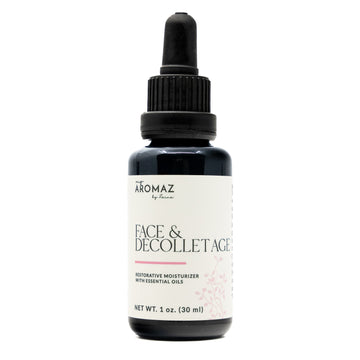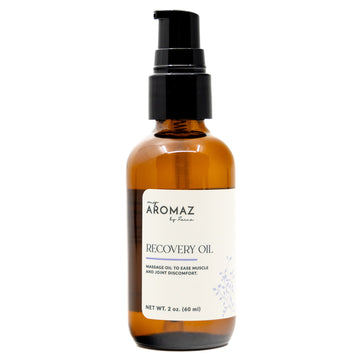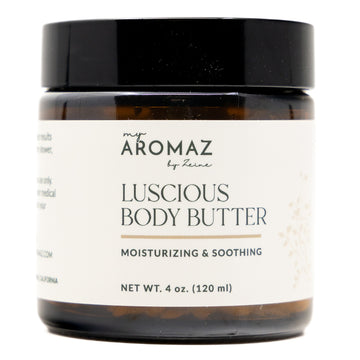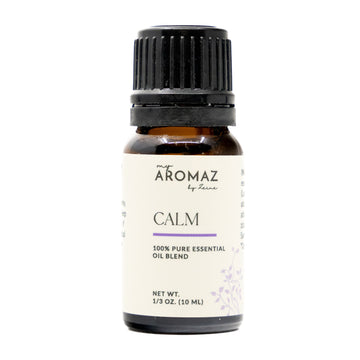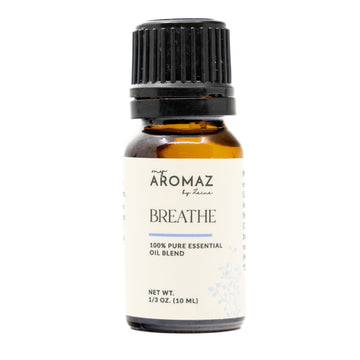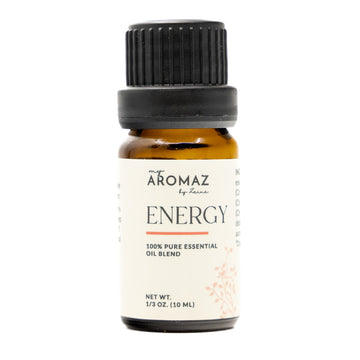I must admit, I had no idea about the sustainability and conservation issues involved with aromatherapy. As I studied the Aromatherapy Certification Program course, I started asking myself, how can we buy a 5 ml bottle of Rose EO when we know how many roses have been used to make that bottle? I was puzzled by the information I discovered and wanted to know more. I researched a lot about the sustainability of endangered plant species, causes of rarity, and what we can do to make things better. That’s how the idea of this research paper was born. In this paper, I will first go through numbers and statistics that give us an understanding of how deep the sustainability and conservation issue is, and then I will discuss specific plants that are considered endangered species. Lastly, I will explore different available solutions that we should all be part of to save the plants and be kind to future generations.
What is the issue with sustainability and conservation?
“Conservation is the preservation, protection, or restoration of biodiversity” (Butje, Aromahead Institute, 2022, Aromatherapy Certification Course Online, https://course.aromahead.com/online-course/aromatherapy-certification-program/reference/general-reference/conservation-and-sustainability-of-aromatic-medicinal-plants. It is the activities and efforts made to protect the natural resources.
Sustainability is the ability to use plants responsibly and not destroy their ability to continue for a long time. Sustainability is working towards preventing plants from becoming extinct. When we think of sustainability, I would want to consider what this means to the people and the workers involved in the process of farming, collecting, and the whole supply chain.
What does that mean for the essential oils business and why is it an issue? Essential oils, which are used for their therapeutic effects need an incredible amount of plants for production. The yield is usually very low, between 0.02% (for Rose otto - Rosa damascena and up to 10% for Myrrh - Commiphora myrrha (Robins, Aromaweb, 2022, https://www.aromaweb.com/articles/essential-oil-yields.asp). The average yield is 1-2%.
Some examples: It takes about 60 rosebuds to create one single drop of Rose otto (Rosa damascena) essential oil. That’s 4,800 rosebuds for just the 5 ml bottle I bought. To make one pound of Lavender (Lavandula Angustifolia) EO, 250 pounds of lavender are needed. We need 50 lemons to make a 15 ml bottle of Lemon (Citrus limon) essential oil.
Here is a table taken from aromaweb.com that has yields for 26 essential oils:
|
Common Oil Name / Botanial Name |
Yields from |
Yields from |
|
Basil Essential Oil |
0.02-0.04% (Page 68) |
|
|
Bergamot Essential Oil |
0.3-0.6% (Page 69) |
.4-.5% (Page 135) |
|
Chamomile, German Essential Oil |
0.05-0.1% (Page 72) |
.2-.3% (Page 193) |
|
Chamomile, Roman Essential Oil |
0.8-1.0% (Page 72) |
.1-1% (Page 304) |
|
Cinnamon Bark Essential Oil |
0.5-0.8% (Page 72) |
|
|
Citronella Essential Oil |
0.4-3% (Page 80) |
|
|
Clary Sage Essential Oil |
0.1-1% (Page 72) |
.6-1% (Page 164) |
|
Eucalyptus globulus Essential Oil |
3-4% (Page 75) |
1.25-3.3% (Page 173) |
|
Fir, Douglas Essential Oil |
0.7-1% (Page 76) |
|
|
Frankincense Essential Oil |
0.40% (Page 76) |
|
|
Geranium Essential Oil |
0.1-1% (Page 76) |
.1-.2% (Page 185) |
|
Ginger Essential Oil |
1.9-2.6% (Page 77) |
3.3-5% (Page 200) |
|
Lavender Bud Essential Oil |
2.5-3% (Page 80) |
|
|
Marjoram Essential Oil |
0.3-0.9% (Page 81) |
.5-.6% (Page 257) |
|
Myrrh Essential Oil |
2-10% (Page 82) |
|
|
Neroli Essential Oil |
0.07-0.1% (Page 69) |
|
|
Patchouli Essential Oil |
1.5-4% (Page 84) |
2-3.3% (Page 280) |
|
Pepper Essential Oil |
1-2% (Page 85) |
|
|
Peppermint Essential Oil |
0.1-1.5% (Page 82) |
1-1.4% (Page 288) |
|
Petitgrain Essential Oil |
0.2-0.4% (Page 69) |
|
|
Rose Otto Essential Oil |
0.02-0.03% (Page 86) |
|
|
Rosemary Essential Oil |
1-2% (Page 86) |
1-2% (Page 311) |
|
Rosewood Essential Oil |
0.8-1.2% (Page 86) |
|
|
Sandalwood Essential Oil |
3-5% (Page 87) |
|
|
Tea Tree Essential Oil |
1-2% (Page 89) |
1.60% (Page 334) |
|
Ylang Ylang Essential Oil |
1.5-2.5% (Page 92) |
1.25-2.5% (Page 363) |
(Robbins, Aromaweb, 2022, https://www.aromaweb.com/articles/essential-oil-yields.asp).
Factors that determine the yields include the environment (season/weather), part of the plant (stem, leaf, flower, etc), and harvest time. Also, different chemotypes have different yields.
The bottom line is, a lot of plant material is used for a single drop of essential oil, and the incredible increase in demand is affecting sustainability. The first step in doing something about it is knowing which plants are considered endangered, which is what we will go over in this section. The International Union for Conservation of Nature (IUCN) has a red list of endangered species. Threatened species are categorized into three groups: Critically endangered, endangered, and vulnerable (IUCN Species Survival Commission, IUCN, 2012, IUCN Red List Categories and Criteria, https://portals.iucn.org/library/sites/library/files/documents/RL-2001-001-2nd.pdf).
Critically endangered: considered to be at “extremely high risk of extinction in the wild”, or already extinct, but not confirmed yet.
Endangered: considered to be at “very high risk of extinction in the wild”.
Vulnerable: considered to be at “high risk of extinction in the wild”.
Those categories have been internationally recognized and widely used. Criteria include reduction in population, extent of occurrence, population size, and probability of extinction.
Threatened plants are protected by the Convention on International Trade in Endangered Species of Wild Fauna and Flora (CITIES). CITIES is an international agreement between governments to ensure protection of threatened species. This means those plants can’t be traded without a CITIES certificate.
Which plants are considered threatened? There are 19 or more plants used for essential and carrier oils that are considered threatened and at least 7 CITIES-protected (Butje, Aromahead Institute, Aromatherapy Certification Course Online, 2022, https://course.aromahead.com/online-course/aromatherapy-certification-program/reference/general-reference/conservation-and-sustainability-of-aromatic-medicinal-plants). In this paper, we cover Sandalwood, Rosewood, and Frankincense. I choose these three because they are oils I used long before knowing all the sustainability issues, and I was eager to dig deeper, understand more, and educate others.
Sandalwood (Santalum): Most sandalwood species are native to Hawaii, India, and Australia. Sandalwood has been a very popular and loved scent for thousands of years. It has been overharvested, being used in religious and spiritual ceremonies, in skincare for burns, in perfumes, soaps, moisturizers, and everything we could think of. The sandalwood population has, therefore, drastically decreased and collapsed due to over-harvesting.
According to United Plant Savers, native Hawaiian sandalwood is at risk of extinction because it takes “40 years to mature” and “harvesting involves removing the entire tree”. Hawaii remains the only region where sandalwood harvest is not regulated (Castle et al., United Plant Savers, 2016, Ranking Tool Created for Medicinal plants at Risk of Being Overharvested in the Wild, https://unitedplantsavers.org/wp-content/uploads/2016/01/169-741-2-PB.pdf).
According to Dr. Susan Leopold, ethnobotanist, and Executive Director at United Plant Savers, of the 16 commercial sandalwood species, 10 are on the IUCN red list, and one is already extinct. Several challenges are making sandalwood threatened: long period to regenerate, not easy to reproduce, over-harvested, etc.
(Leopold, Conservation & Creation: Sustainable Botanical Sourcing, 2021, https://on24static.akamaized.net/event/33/86/84/1/rt/1/documents/resourceList1632947061877/quintuspdfpresentation1632947059701.pdf).
Indian sandalwood (Santalum album) is also highly endangered due to overexploitation. It is considered sacred in Hinduism and believed to have great therapeutic benefits. The plant is used for several purposes, including pharmaceutical, fragrance, and cosmetics. It has also gained increased popularity and importance in modern medicine as a possible treatment for some diseases.
Indian sandalwood is very high in sentanol at approximately 90%, whereas the Australian sandalwood (Santalum spicatum) contains about 39% (Wikipedia, 2022, https://en.wikipedia.org/wiki/Santalum_album). The demand has increased so much, and illegal trading and harvesting are taking place to try and meet such demand. This has led to the plant being vulnerable to extinction.
Australian sandalwood (Santalum spicatum) is protected and listed as vulnerable. It has been used as a source of food, medicine, and fragrance for many years. The wild population has also decreased dramatically due mainly to over-harvesting and poor weather conditions. In 2020, two Indian sandalwood plantations started full operation in Western Australia: Quintis and Santanol.
Rosewood (Aniba rosaeodora): Rosewood has a rich burgundy color and is used for furniture, musical instruments, and fragrance. Rosewood is on the endangered list because of over and unethical harvesting. The illegal trade of rosewood is worth millions of dollars and has been driven by use in Chinese furniture. Rosewood is “the world’s most trafficked wild product” and all 300 species have been placed under trade restrictions by CITIES (Wikipedia, 2022, https://en.wikipedia.org/wiki/Rosewood). The most notable species is Brazilian rosewood (Dalbergia nigra). Over-harvesting this rosewood species since colonial times in Brazil has led to its endangerment, and being listed in CITIES Appendix I, which means it is at the greatest danger of extinction and has the highest level of protection.
I was amazed to read that even giant essential oil companies illegally harvested rosewood and made millions of dollars out of it (Leopold, United Plant Savers, 2018, When the Music Goes Silent, https://unitedplantsavers.org/when-the-music-goes-silent/). It is unbelievable how companies market themselves as being kind to the planet and following sustainability principles while selling oils from illegally harvested plants.
In Madagascar, the illegal harvesting of rosewood is increasing, threatening the rainforest there and affecting the whole ecosystem. Even with government regulations, illegal trade is still taking place, because of the weak penalties and lack of law enforcement.
Frankincense (Boswellia): According to the National Association for Holistic Aromatherapy (NAHA), only one frankincense tree (Boswellia papyrifera) is at risk of extinction (Koeppen, National Association for Holistic Aromatherapy, 2013, Frankincense Fears Largely Unfounded, https://naha.org/naha-blog/frankincense-fears-largely-unfounded). However, this article is from 2013, and it is citing information from IUCN which dates from 1998. The IUCN recognizes Boswellia sacra as near-threatened, which is not the same as endangered, but indicates that the information needs updating (IUCN red list, 2022, https://www.iucnredlist.org/species/34533/9874201).
Most frankincense species are found in Somalia, Oman, and Yemen. Frankincense therapeutic and religious history goes back to more than 5000 years ago. The tree resin has been very valuable since ancient times. It is obtained by cutting the bark and taking the resin that comes out after the cut. In Somaliland, frankincense is over-harvested, workers are underpaid, and the resin is taken to be sold in other countries at a much higher price. The resin “has been used to treat wounds, skin infections, inflammatory diseases, dementia and various other ailments, spanning both Ayurvedic and Chinese traditional medicines” (DeCarlo, Research outreach, 2022, Save Frankincense: Over-harvesting of a precious commodity and approaches to ensure sustainability, https://researchoutreach.org/articles/save-frankincense-overharvesting-precious-commodity-approaches-ensure-sustainability/). DeCarlo visited Somaliland and interviewed harvesters, traders, and government. She concluded that frankincense trees have been way over-harvested. With way too many cuts, and not always in the right season, over-harvesting is still happening even though there is general knowledge about harvesting this resin. Over-harvesting often correlated with low income and poverty conditions which contributed to unsustainable practices. Although frankincense is not considered as threatened as other trees, we still need to think about its sustainability and conservation, and what this means to the harvesters as well as the trees.
Other carrier and essential oil-bearing plants I have not covered in this paper but are considered threatened:
Critically endangered:
- Palo santo (Bursera graveolens)
- Spikenard (Nardostachys jatamansi): India, Nepal, Bhutan, Myanmar, SW China
- Guggul [myrrh] (Commophora wightii)
- Silver white fir (needle) (Abies alba): Belarus
- Agarwood (Aquilaria malaccensis): India
Endangered:
- Juniper berry (Juniperus communis): Europe
- Atlas cedarwood (Cedrus atlantica): Algeria, Morocco
- Bay laurel (Laurus nobilis): Albania, Slovenia
- Araucaria (Nelocallitropsis pancheri): New Caledonia Endangered:
Vulnerable:
- Olive (Olea europaea): Tunisia
- Sweet almond (Prunus amygdalus): Pakistan
- Spanish cedar (Cedrela odorata)
- Elemi (Canarium luzonicum): Philippines
- Sassafras (Ocotea pretiosa): Brazil, Argentina, Paraguay
- Siam wood (Fokienia hodginsii): China, Laos, Vietnam
- Agarwood (Aquilaria malaccensis)
This list of plants is taken from the ACP course (Butje, Aromahead Institute, Aromatherapy Certification Course Online, 2022, https://course.aromahead.com/online-course/aromatherapy-certification-program/reference/general-reference/conservation-and-sustainability-of-aromatic-medicinal-plants) and Airmid Institute (Ablard, Airmid Institute, 2022, Conservation of Essential and carrier oil-bearing Plants https://airmidinstitute.org/blog/conservation-sustainability-of-essential-carrier-oil-bearing-plants/)
What is the solution?
Taking responsibility:
Conservation and sustainability should be everyone’s responsibility, starting with the harvester to the consumer. Harvesters and landowners should be able to advocate for their needs, although understandably easier said than done. Traders should work more ethically and give back to these communities so that there is no over-harvesting of trees. They should also follow government laws and respect restrictions. Companies buying from traders should verify the supply chain and know what they are buying. They should also be transparent about their own practices. The final consumers should educate themselves on the production of essential oils and sustainability practices. They should be made aware of conservation and sustainability issues by the companies they purchase oils from and should be able to know where their oil is coming from and what was involved in the production of the oil and only support fair trade practices.
Tree planting:
As we saw in the case of Sandalwood, tree plantation is possible and could be a solution for sustainability and conservation. Quintis is now a global leader in the supply of sandalwood. It sources seeds from India and plants them in Australia.
Although plantation of sandalwood has been successful, there are limitations to this solution in general, such as weather, soil, and other natural conditions that cannot be recreated.
Alternatives:
Aromatherapists and even consumers can look for alternatives when choosing oils. Often, an alternative is not difficult to find. Looking at the oil properties and chemical components, we should be able to replace it with another oil or a blend of different oils.
To conclude, a lot of the essential oil-bearing plants have been facing sustainability and conservation issues. The incredible increase in demand over many decades caused many species to be over-harvested and are in danger of extinction. There is hope for some plants, such as sandalwood being produced in Australia. “After 16 years of cultivation”, the first batches of oils were produced in 2014 (Tisserand, Tisserand Institute, 2019, Santalum album oil rejuvenated, https://tisserandinstitute.org/santalum-album-oil-rejuvenated/) but this is not always the case. The situation in Somalia with frankincense does not seem to be going away anytime soon. We are all responsible and should do our part to save the plants. If we believe that essential oils heal us, the least we can do is not harm the plants that carry those oils. Saving the plants start with us. Let’s all make Earth a better place.
References:
- Ablard, Airmid Institute, 2022, Conservation of Essential and carrier oil-bearing Plants https://airmidinstitute.org/blog/conservation-sustainability-of-essential-carrier-oil-bearing-plants/)
- Butje, Aromahead Institute, Aromatherapy Certification Course Online, 2022, https://course.aromahead.com/online-course/aromatherapy-certification-program/reference/general-reference/conservation-and-sustainability-of-aromatic-medicinal-plants
- Castle et al., United Plant Savers, 2016, Ranking Tool Created for Medicinal plants at Risk of Being Overharvested in the Wild, https://unitedplantsavers.org/wp-content/uploads/2016/01/169-741-2-PB.pdf
- DeCarlo, Research outreach, 2022, Save Frankincense: Overharvesting of a precious commodity and approaches to ensure sustainability, https://researchoutreach.org/articles/save-frankincense-overharvesting-precious-commodity-approaches-ensure-sustainability/
- IUCN Species Survival Commission, IUCN, 2012, IUCN Red List Categories and Criteria, https://portals.iucn.org/library/sites/library/files/documents/RL-2001-001-2nd.pdf
- IUCN red list, 2022, https://www.iucnredlist.org/species/34533/9874201)
- Koeppen, National Association for Holistic Aromatherapy, 2013, Frankincense Fears Largely Unfounded, https://naha.org/naha-blog/frankincense-fears-largely-unfounded
- Leopold, 2021, Conservation & Creation: Sustainable Botanical Sourcing, https://on24static.akamaized.net/event/33/86/84/1/rt/1/documents/resourceList1632947061877/quintuspdfpresentation1632947059701.pdf
- Leopold, United Plant Savers, 2018, When the Music Goes Silent, https://unitedplantsavers.org/when-the-music-goes-silent/
- Robbins, Aromaweb, 2022, https://www.aromaweb.com/articles/essential-oil-yields.asp
- Tisserand, Tisserand Institute, 2019, Santalum album oil rejuvenated, https://tisserandinstitute.org/santalum-album-oil-rejuvenated/)
- Wikipedia, 2022, https://en.wikipedia.org/wiki/Santalum_album
- Wikipedia, 2022, https://en.wikipedia.org/wiki/Rosewood)


